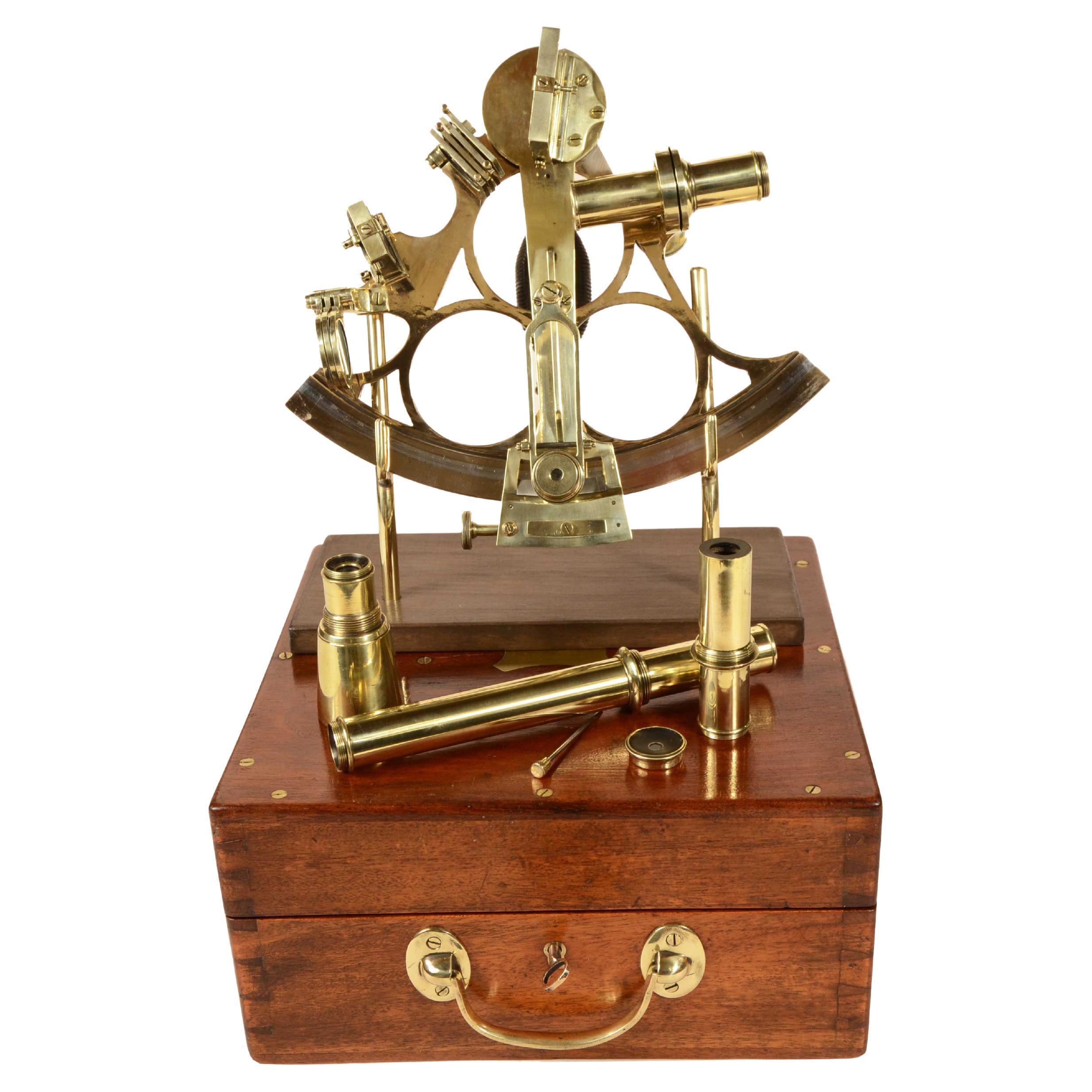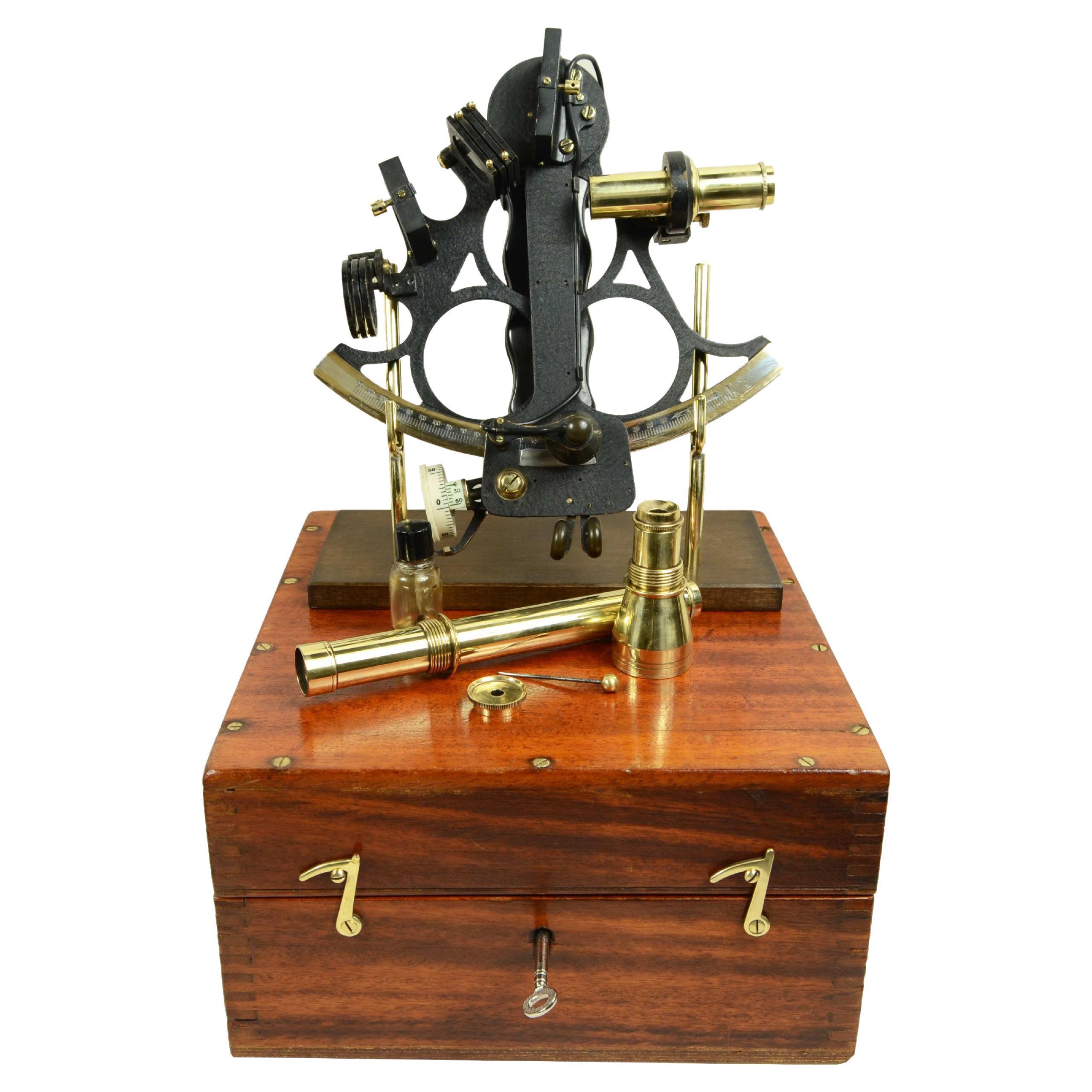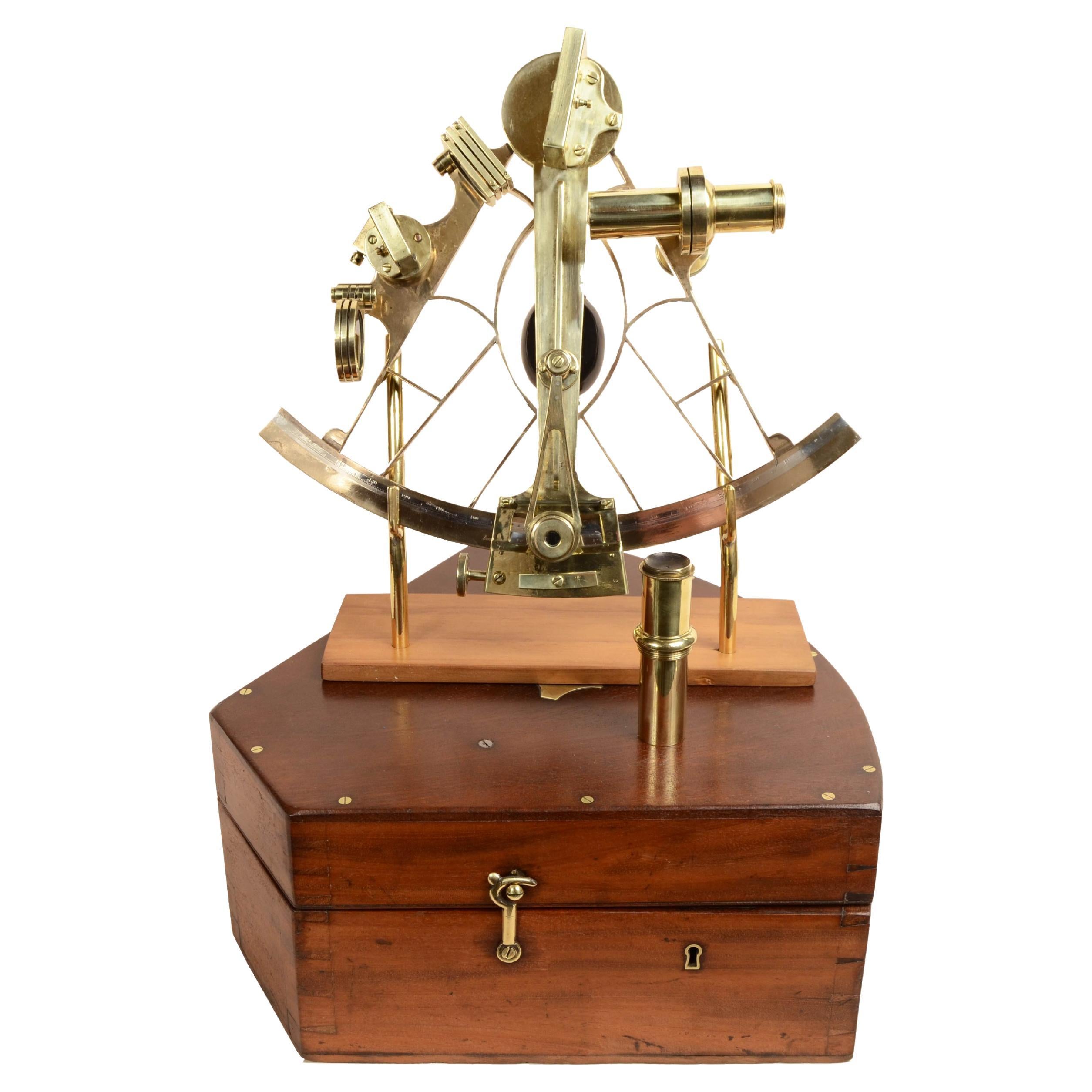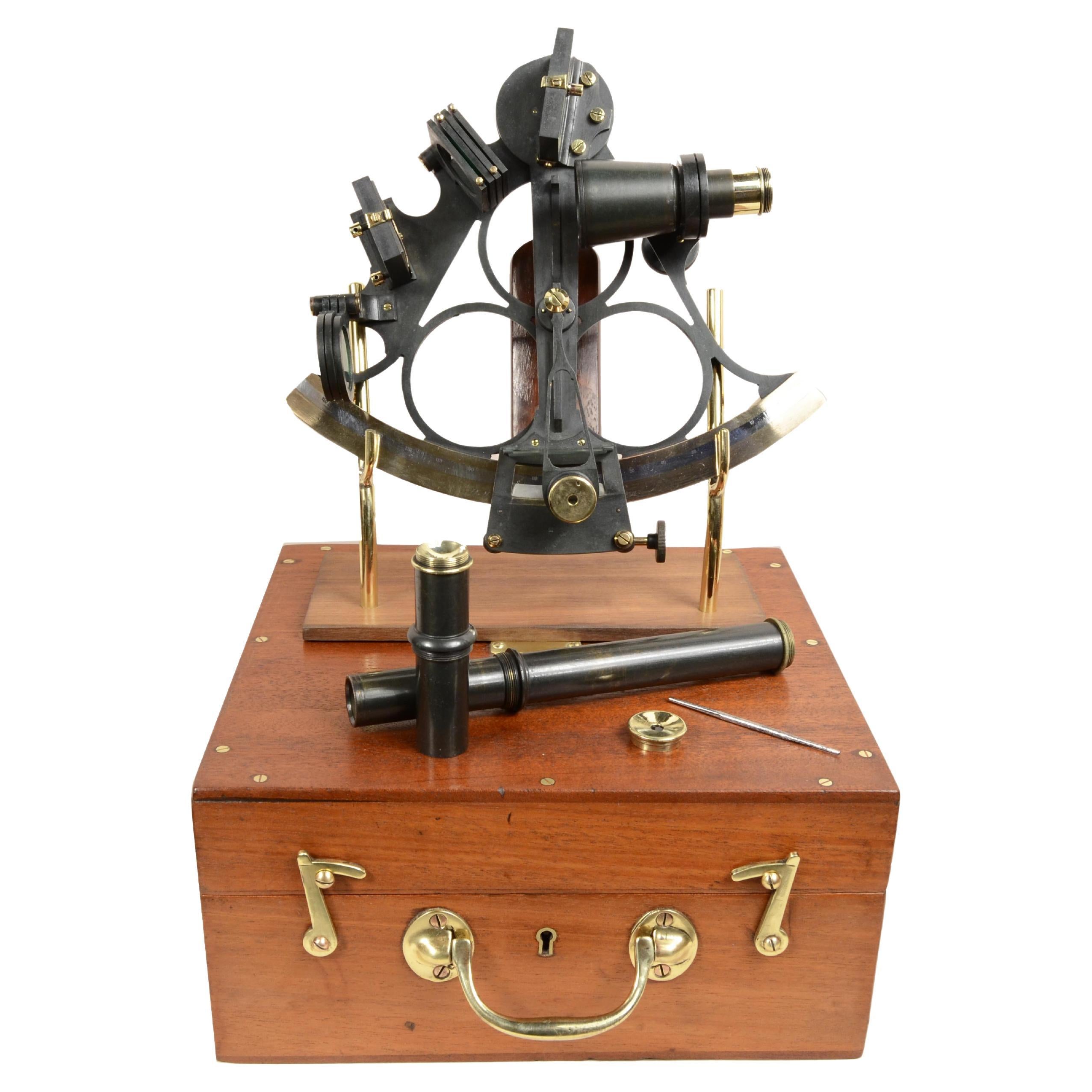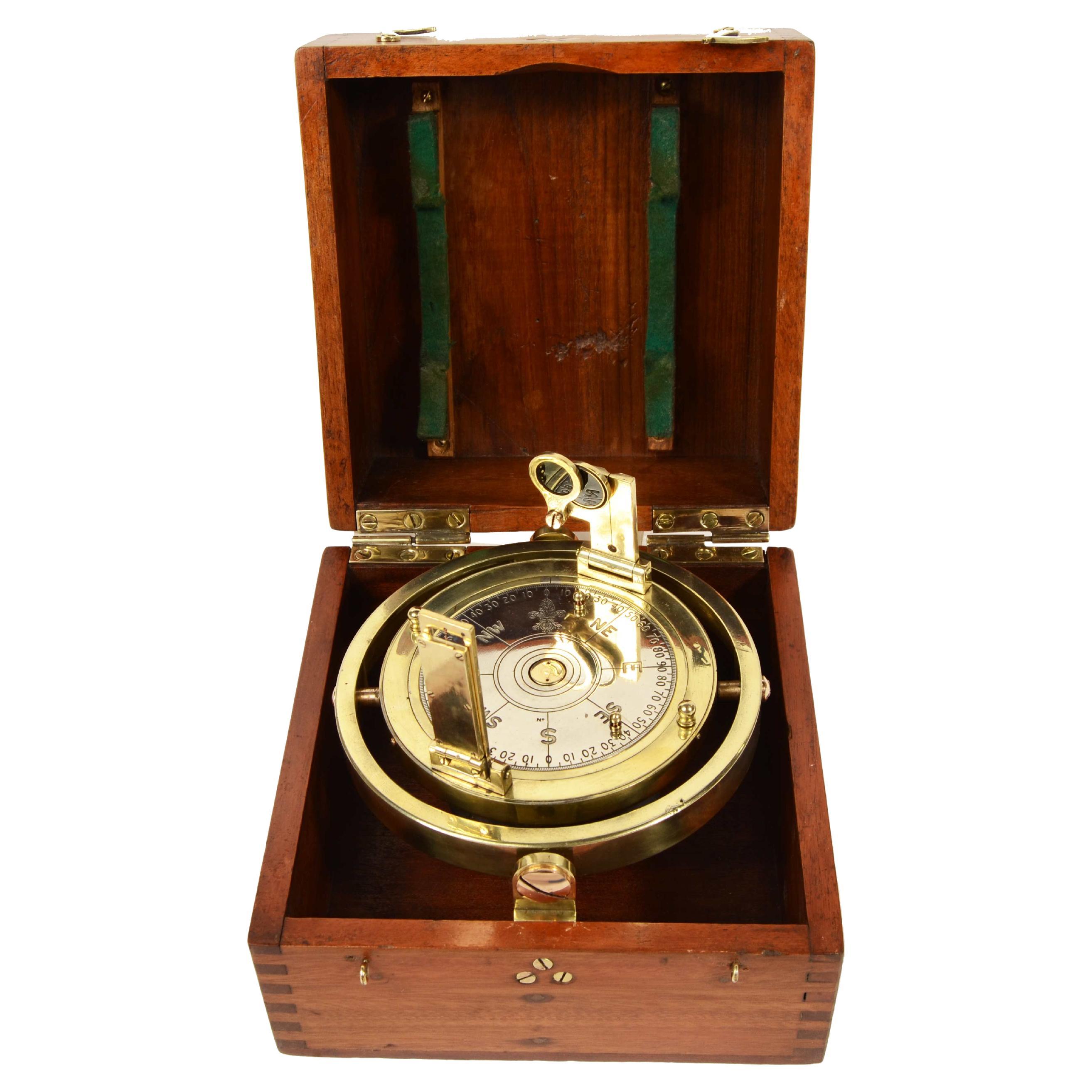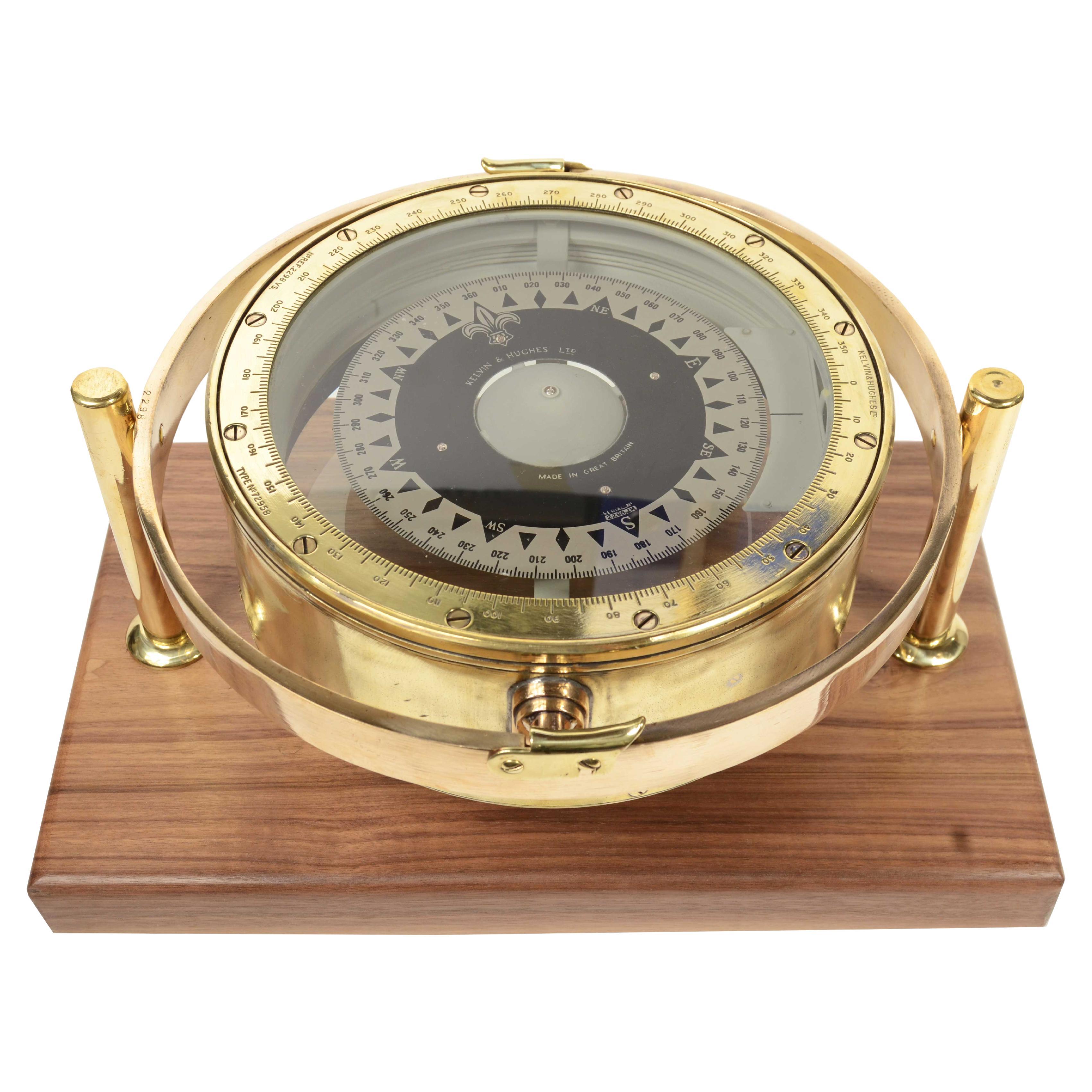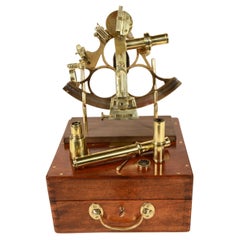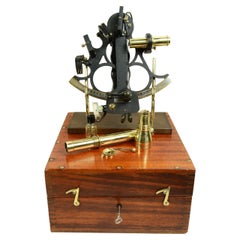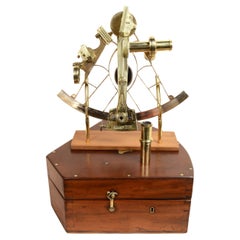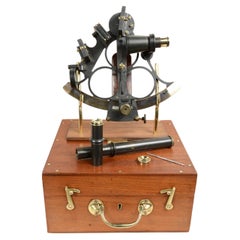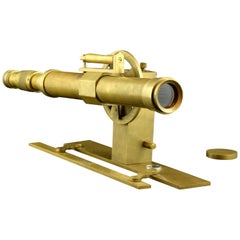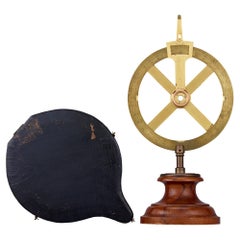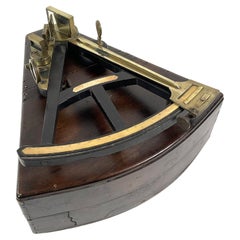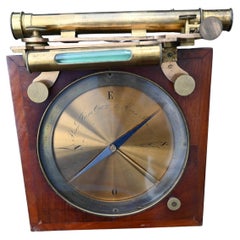Items Similar to Ebony, brass octant signed Hughes London made around 1830
Want more images or videos?
Request additional images or videos from the seller
1 of 20
Ebony, brass octant signed Hughes London made around 1830
$3,105.04
£2,296.08
€2,600
CA$4,265.08
A$4,742.52
CHF 2,482.80
MX$57,930.82
NOK 31,198.79
SEK 29,348.71
DKK 19,797
About the Item
Ebony wood, brass and marine ivory octant, scale from 0° to 100°,signed Hughes London made around 1830.
Good condition, complete with custom-made display base made of wood and brass.
Measures 25x30x8 cm - inches 9.8x11.8x3.1.
The octant, eighth part of the circle, is a reflection instrument, proposed for the Western world around 1731 by John Hadley (1682-1744) and used to measure at sea the height of the Sun or a star relative to the horizon. A movable arm, equipped with a mirror and pivoted on a graduated arc, makes it possible to obtain by reflection the image of the star superimposed on that of the directly observed horizon. Early instruments were made of fine wood, usually ebony or mahogany, and had ivory graduation; later they were replaced by brass or bronze instruments, and the graduation was engraved on a silver strip embedded in the metal arch of the flap.
The need to make angle measurements more accurate required more and more precise instruments, and in the late seventeenth century the first document appears that mentions the principle of reflection of plane mirrors, applied to the measurement of angles, in this document an instrument is mentioned devised around 1665 by Robert Hooke (1635-1703) and presented to the scientific community. This instrument being equipped with only one mirror allowed for simple reflection and was therefore inadequate for the purpose.
Hooke realized the drawback, but failed to perfect his instrument; however, the idea of making use of reflection was taken up by other researchers who studied ways to correct the drawbacks of the initial instrument, until in 1731, John Hadley presented his double-reflection octant, formed by a 45-degree arc divided into 90 half-degrees, to the Royal Society of London.
In 1732, the British Admiralty made the yacht Chatman available to experiment in navigation with Hadley's instrument, which won praise from the most distinguished astronomers of the time.
Early instruments were made of fine wood, usually ebony, and had ivory graduation; later they were replaced by brass or bronze instruments, and the graduation was engraved on a silver strip embedded in the metal arch of the flap.
About the Seller
5.0
Gold Seller
Premium sellers maintaining a 4.3+ rating and 24-hour response times
Established in 1999
1stDibs seller since 2014
398 sales on 1stDibs
Typical response time: 1 hour
- ShippingRetrieving quote...Shipping from: Milan, Italy
- Return Policy
Authenticity Guarantee
In the unlikely event there’s an issue with an item’s authenticity, contact us within 1 year for a full refund. DetailsMoney-Back Guarantee
If your item is not as described, is damaged in transit, or does not arrive, contact us within 7 days for a full refund. Details24-Hour Cancellation
You have a 24-hour grace period in which to reconsider your purchase, with no questions asked.Vetted Professional Sellers
Our world-class sellers must adhere to strict standards for service and quality, maintaining the integrity of our listings.Price-Match Guarantee
If you find that a seller listed the same item for a lower price elsewhere, we’ll match it.Trusted Global Delivery
Our best-in-class carrier network provides specialized shipping options worldwide, including custom delivery.More From This Seller
View AllBrass sextant signed B. Cooke & Son Hull from the second half of the 19th century
Located in Milan, IT
Brass sextant signed B. Cooke & Son Hull, from the second half of the 19th century and housed in its original mahogany wood box with brass handle, hinges, and locking hooks, complete...
Category
Antique 1870s Nautical Objects
Materials
Brass
Brass sextant signed H. Hughes & Son Ltd No. 32890 of the 1930s
Located in Milan, IT
Brass sextant signed H. Hughes & Son Ltd No. 32890 of the 1930s; instrument complete with optics and housed in its original mahogany wood box of with locking hooks and brass handle,...
Category
Vintage 1930s Nautical Objects
Materials
Brass
Brass sextant signed Imray & Son 89 & 102 Minories London mid-19th century
Located in Milan, IT
Brass sextant signed Imray & Son 89 & 102 Minories London, datable to around mid-19th century, instrument housed in its original mahogany box shaped like the instrument with hinges, ...
Category
Antique Mid-19th Century Nautical Objects
Materials
Brass
Burnished brass sextant D. Mc Lean & Co Lta 113 Frenchurch St. London 1890
Located in Milan, IT
Burnished brass sextant D. Mc Lean & Co Lta 113 Frenchurch St. London, datatable around the end of the 19th century, instrument complete with optics and housed in its original squa...
Category
Antique 1890s Nautical Objects
Materials
Brass
English Pelorus brass from the second half of the 19th century, on cardan joint
Located in Milan, IT
English Pelorus brass from the second half of the 19th century, mounted on gimbals within its original mahogany wood box with brass hinges and locking hooks.
The instrument has an...
Category
Antique 1870s Nautical Objects
Materials
Brass
Large brass magnetic nautical compass signed KELVIN & HUGHES early 1900s
Located in Milan, IT
Large brass and glass magnetic nautical compass, signed KELVIN & HUGHES Ltd, Made in Great Britain Serial No. 2298 J.M. Made in Britain in the early 1900s, mounted on a custom-made w...
Category
Antique Early 1900s Nautical Objects
Materials
Brass
You May Also Like
Decorative Alidade, Metal, 20th Century
Located in Madrid, ES
It has a cover to protect the lens made of the same gold metal in which the rest of the instrument is made. The lines, pure and clean, are the protagonists, and make it a great opti...
Category
20th Century Unknown Other Scientific Instruments
Materials
Metal, Other
Holland Circle by Baumann and Kinzelbach
Located in New Orleans, LA
This intriguing item is almost certainly a Holland Circle by German scientific instrument makers Baumann & Kinzelbach. The Holland Circle, sometimes referred to as a Dutch Circle, was used in land surveying and is a precursor to the theodolite, an optical instrument for measuring angles. Baumann and Kinzelbach were based in Stuttgart, Germany, and in addition to crafting surveying instruments...
Category
Antique 19th Century German Scientific Instruments
Materials
Bronze
Mid Nineteenth Century Ships Octant
Located in Norwell, MA
Navigators octant with ebony frame, brass arm, filters and peep sight. Bone Vernier scale. Kidney shaped box. Split to box. Circa 1860. This is a good genuine example of an early American marine...
Category
Antique 1860s European Scientific Instruments
Materials
Brass
Antique Surveyor's Circumcompendium Signed Brand Frères, 1850-1880
Located in Bilzen, BE
"Antique Surveyor's Circumcompendium Signed Brand Frères, 1850-1880"
Description: Antique Surveying Circumferentor by Brand Frères
Brand Frères, Optic...
Category
Antique Mid-19th Century Belgian Other Scientific Instruments
Materials
Brass
Antique Surveyor's Level, English, Brass, Scientific Instrument, Halden & Sons
Located in Hele, Devon, GB
This is an antique surveyor's level. An English, brass scientific instrument by J. Halden & Sons of Manchester, dating to the early 20th century, circ...
Category
Early 20th Century British Scientific Instruments
Materials
Brass
Nautical marine Sextant by Negretti and Zambra London
Located in Norwich, GB
Nautical Marine Sextant by Negretti and Zambra, London.
Brass and oxidised nautical sextant signed Negretti and Zambra, London.
This fine instrumen...
Category
Antique Early 1900s Nautical Objects
Materials
Brass
More Ways To Browse
Antique Mobiles
Rosa Dei Venti
Antique Brass Portholes
Antique Nautical Tools
Antique Ship Binnacle Compass
Antique Iron Pulley
Antique Nautical Portholes
Antique Ship Helm
Antique Ships Telegraph
Vintage Brass Pump
Vintage Buoys
Vintage Gaff
Wood Oars
Wooden Ship Wheels
Antique Half Hull Models
Antique Ship Pulley
Antique Ships Porthole
Burgee Flag
